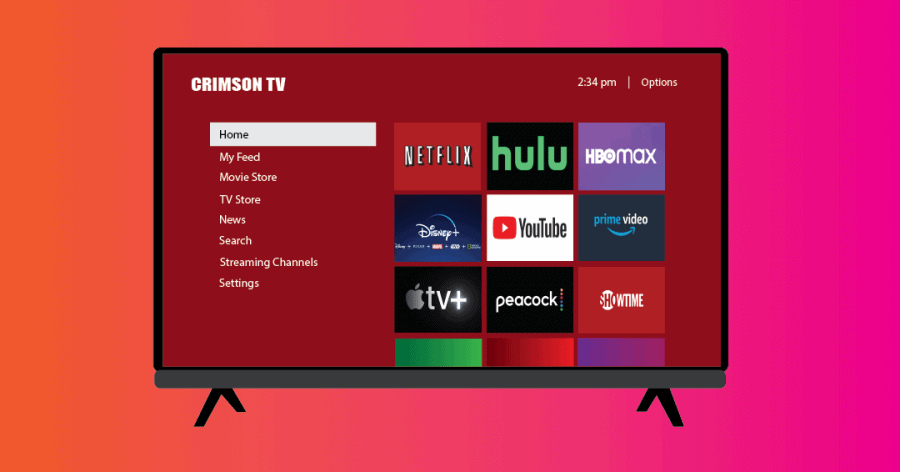The rise of streaming platforms: More shows, more money, more problems
June 16, 2021
In the 2010s, TV reached its peak. Cable and satellite TV prices were skyrocketing, there were more commercials than ever before and most packages came with thousands of channels.
Netflix exploded in popularity with its foray into streaming in 2007, changing TV as we know it. The new streaming service had no commercials or no download wait time, but offered access to hundreds of shows and movies. Best of all, it was accessible and cheap compared to cable.
The Switch
When Netflix made it big in the late 2010s, many families and households switched to streaming and canceled their monthly cable subscriptions. With cable and satellite prices soaring to $50 and $100 per month, many consumers were attracted to Netflix’s $8.99 monthly subscription fee.
With Netflix gaining ground on cable and satellite, the future of TV became an open question.
A year after Netflix started streaming, Hulu jumped in the game to offer newly aired content that outshined Netflix’s month-long wait time for in-demand TV shows and movies.
Around the same time, Amazon Prime Video was bundled with an Amazon Prime membership, allowing consumers to not only watch thousands of movies and TV shows, but also to shop with faster shipping.
Although Netflix, Hulu and Amazon Prime Video have been around for well over a decade, the COVID-19 pandemic allowed the three services and other streaming networks to expand their membership bases, particularly among those staying at home amid lockdown restrictions.
The Boom
In the first three months of 2020, Netflix more than doubled its expected number of new subscribers for the year, adding 15 million new subscribers. Disney+, which launched in November 2019, gained 22 million subscribers during the early months of lockdown.
With millions stuck at home, streaming services became a lifeline in an otherwise dreary world.
As states lifted lockdown orders, life didn’t immediately return to normal. Nearly 93% of households reported that their school-aged children were participating in some form of distance learning, and more than one-third of adults were still working from home either part-time or full-time in February 2021.
Several studies have shown that many adults working from home watch TV on their breaks or while they work. This, paired with kids being at home and people being less comfortable going out, explains how COVID-19 pushed the streaming industry into a golden age.
The Race
More companies are jumping on the streaming bandwagon. Instead of Netflix paying other networks for access to their shows and movies, major media companies like HBO, Discovery and Paramount have developed streaming services with separate monthly fees.
With these streaming giants vying for subscribers, the race to create and upload new content started.
In the past year, Paramount introduced Paramount+, complete with beloved shows like “RuPaul’s Drag Race” and an “iCarly” revival special. In January, Discovery created Discovery+, which features reality TV shows from HGTV, TLC, the Travel Channel and more.
HBO abandoned past attempts at streaming services, HBO Go and HBO Now, and started HBO Max in May, complete with “Game of Thrones” and the Harry Potter movies.
HBO Max kept its content fresh with the latest films like Lin-Manuel Miranda’s newest musical “In The Heights,” “Those Who Wish Me Dead” starring Angelina Jolie and a “Friends” reunion special.
Disney+ recently made headlines with its expansion of the Marvel cinematic universe, like “WandaVision” and the highly anticipated “Loki.”
The Cost
With more streaming services comes more monthly fees. This explosion of streaming services forced many to purchase multiple subscriptions: Disney+ for their kids, Sling for live sports and Amazon Prime Video for movies on date night.
As states lift pandemic restrictions, many have questioned the longevity of some streaming services. Will Netflix and Hulu struggle for content if other companies pull shows and movies to make their own services?
Other companies, which have been established in the TV circuit for decades, have enough content to stream on their own platforms. Paramount owns Nickelodeon’s content and HBO Max owns dozens of shows and movies from Warner Brothers and Studio Ghibli.
Most streaming services create original content. Will viewers decide it warrants the subscription?
Although streaming was touted as more affordable and convenient than cable and satellite TV, the sheer number of streaming services has skyrocketed monthly entertainment costs.
Netflix’s streaming plans range from $8.99 to $17.99 per month. Hulu, one of the cheapest streaming options at $5.99 a month has a catch: commercials. For a break from constant advertising, users can pay $11.99 per month to avoid commercials.
On the cheaper side, both Discovery+ and Paramount+ are $4.99 per month, and university students are eligible for discounts at many streaming services.
The Same
These streaming services show us exactly what we knew all along: none of them are outstanding on their own. Netflix’s greatness in its early days was its consolidation of shows and movies from across the media circuit.
With fewer media companies partnering, we’re stuck paying upwards of $10 per month for each streaming service, many of which we use to watch a handful of shows and movies.
In a recent study conducted by Verizon Media, more than half of people said they were overwhelmed by the number of streaming services, and 48% of respondents said they were worried about spending too much money.
Before the pandemic, the rate of cancellation on streaming services was around 20%. In February 2021, the cancellation rate peaked at 37%.
Many families are cutting back on streaming services. Between all of the passwords, payments and overwhelming options, streaming services are starting to be more work than they’re worth.








